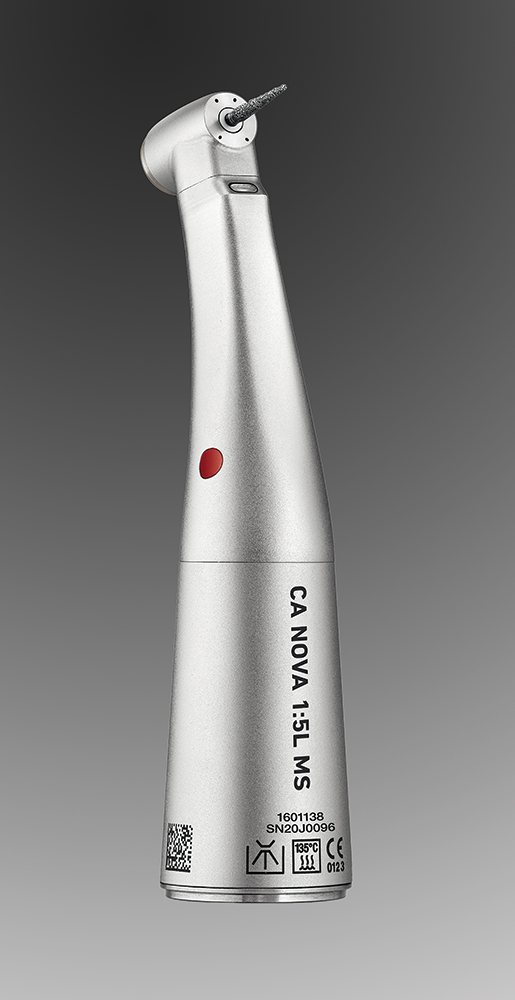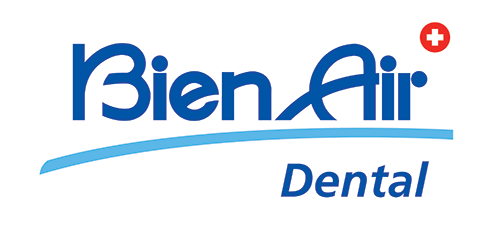Advertorial: A New Standard of Excellence for Electric Handpieces
John Flucke, DDS shares his experience taking Bien-Air's Nova electric handpiece for a Test Drive.

Back in my days as an undergraduate at the University of Missouri-Kansas City, I became fascinated by human behavior. I made my mind up to be a dentist at an early age, and I started my undergrad career as a chemistry major, but that soon changed to psychology.

Little did I realize that my bachelor of arts in psychology would be put to frequent use in a dental practice as well as in my role keeping up with the numerous rapid advancements in dental technology.
Making changes can have an incredible effect, and I’d like to discuss the changes that can be made by using the Bien-Air Nova electric handpiece.
As a dentist, I grew up with air turbine handpieces. I practiced for about 10 years with air turbines without considering a change. Then I was given the opportunity to have a 2-week demo with an electric system. I was stunned…and excited by what I experienced. I ordered an electric handpiece the day the demo system was returned. If you have the option to make the change to electric handpieces, do so. You will not regret it.
Electrics offer many advantages over air turbines and some of those advantages are things you have to “feel.” Because I practiced the first half of my career with air turbines and the second half with electrics, I feel I’m qualified to offer some judgments on the subject. So let me tell you why I’m such a big fan of Bien-Air and their new Nova electric handpiece system.
Incredible Power, Control and Performance
First of all, electric handpieces are powerful. Air turbines depend on a tiny stream of pressurized air to spin the turbine in the handpiece head. They initially spin up to around 400k rpm, but when the bur engages with tooth structure, turbine handpieces immediately drop down to between 200k to 160k rpm. You can actually hear the pitch change as you engage tooth structure. Use too much pressure and you can stall the handpiece.
Electrics spin up to 200k rpm and maintain that speed. They are powered by motors that use gears to spin the bur, so the power they deliver is constant and predictable, alllowing for more consistent preparations.
Another benefit of electrics comes in the ability to maintain consistent speed even at low rpm. Creating perfect margins for fixed prosthetics becomes exponentially easier when there is no fluctuation in speed.
Because diamond burs cut in the same manner no matter which way they rotate, electric motors also offer the advantage of being able to reverse rotation. This is useful when interproximal reductions are performed as the bur pulls itself through on the mesial and the distal.
To perform well, the operator must see the field as clearly as possible. This is why most dentists now work under high magnification with auxiliary lighting mounted on their loupes. However, some electric handpieces require larger heads to allow room for the moving parts, making it harder to see while working.
Bien-Air has solved that problem. The Nova handpiece has a small head and a narrow neck for enhanced visibility. The benefits are augmented with a 4-port spray that immediately washes away dust and residue to provide pristine visual acuity. Additionally, the 4-port spray provides copious irrigation to prevent overheating of the pulp and keep the bur cleansed so debris does not build up and decrease cutting efficiency.
To provide smooth, vibration-free cutting, Bien-Air upgraded the moving parts in the Nova to employ Cylcro gears, a high-end solution noted for their precision and durability. This translates to a degree of performance that is unequaled in the world of dental handpieces. The performance of the Nova is smooth, powerful, and incredibly precise.
Durability and Safety Features
To ensure the Nova system holds up under the rigors of clinical use and constant sterilization, Bien-Air is the first company in the dental space to use a technology called PVD (physical vapor deposition) that can decrease temperature fatigue on metals.
Another safety feature is designed to protect the buccal mucosa (or any other tissues) from being damaged by an overheated handpiece head. Bien-Air uses CoolTouch+ technology. The chuck, protected by a ceramic insulated push button, will not heat above human body temperature during operation.
An important part of the high-speed handpiece that many doctors are not even aware of is the antiretraction valve. When the operator steps off the rheostat, the air and water pressure in the lines decreases rapidly, and this can result in bacteria and viral particles being sucked into the lines, and potentially transferred from one patient to another.
To eliminate this problem, engineers developed an antiretraction valve. The Nova handpiece has the first and only sterilizable antiretraction valve in the industry. It’s one more way to protect our patients.
Wrapping Up
I’ve been fortunate to be able to work with the Nova system for a few months now and I have nothing but good things to say about it. The Nova has made an appreciable difference in visualizing the field.
I’m impressed with the Nova, and I’m confident you’ll be impressed too. Give the Nova system a test drive and I think you will also become a fan.